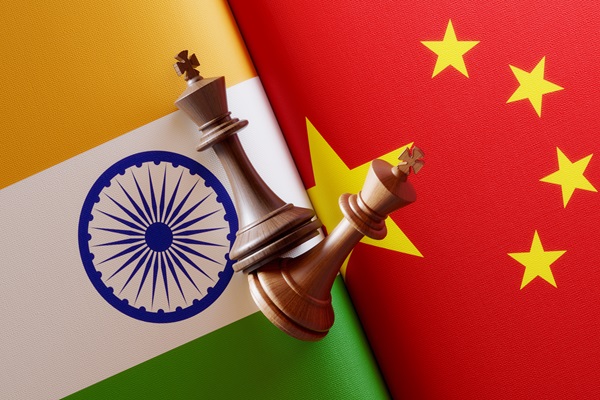.png)

Ajay Srivastava, founder of Global Trade Research Initiative, is an ex-Indian Trade Service officer with expertise in WTO and FTA negotiations.
August 20, 2025 at 1:59 PM IST
On August 19, China announced it would relax restrictions on exports of fertilizers, rare earths, and tunnel-boring machines to India, in what looked like a goodwill gesture ahead of Foreign Minister Wang Yi’s visit to New Delhi on August 21–22. The decision followed talks with External Affairs Minister S. Jaishankar in Beijing.
The optics are clear. After years of tightening export curbs, Beijing is offering a temporary reprieve. Since 2023, it has restricted gallium, germanium, and graphite—critical to India’s electronics, EV, and clean energy industries. In June this year, Chinese battery giant CATL even pulled engineers from Foxconn’s Chennai plant, halting production.
Beijing may ease the tap today, but recent experience has shown how quickly it can turn it off tomorrow.
The backdrop is India’s ballooning trade deficit with China, which hit a record $100 billion in FY2025. The imbalance is not just numerical—it is structural.
China now dominates India’s import basket across almost every category:
- Pharma: 97.7% of erythromycin imports
- Electronics: 96.8% of silicon wafers, 86% of flat panel displays
- Renewables: 82.7% of solar cells, 75.2% of lithium-ion batteries
- Consumer goods: 80.5% of laptops, 98.9% of viscose yarn
- Machinery: 91.4% of embroidery machinery, 92% of saw blades, over 80% of aluminum sheets and foils
Even in basic, low-tech segments, dependence is overwhelming. Imports of viscose yarn, LED fittings, or safety glass are dominated by Chinese supply. Between 2014 and 2024, China’s hold only deepened, covering 57% of India’s telecom and electronics imports and nearly half of machinery and hardware.
Two decades ago, India accounted for 42% of bilateral trade. Today, that share has collapsed to just 11.2%. The message is unmistakable: India’s supply chains are vulnerable, and Beijing holds leverage.
Dependence as Strategy
This dominance is not benign. It gives China the option of turning trade into a tool of pressure during moments of political tension. With Beijing openly backing Pakistan in the recent war, the risks of such leverage are not abstract.
India cannot afford to be hostage to this imbalance. The question is no longer whether China will use trade as a weapon—it is that it can.
Addressing this structural deficit requires more than piecemeal policy tweaks. India needs a dual-track strategy: quick substitution in low- and mid-tech imports, and long-term investment in deep-tech capacity.
1. Reverse Engineering for Quick Wins
IITs, CSIR labs, and engineering colleges must lead a nationwide reverse-engineering program to deconstruct imported products—pumps, bearings, motors, valves, textile machinery—and create open-access blueprints. MSMEs can pick up niche production, while larger firms scale up for mass supply. A “Localize-100 Tracker” should monitor progress on the top 100 import categories.
2. Deep-Tech Manufacturing
India must go beyond assembly and build ecosystems for chips, PCBs, sensors, batteries, and memory units. The recently announced ₹100 billion innovation fund must channel patient capital into design, R&D, and skills—on the lines of Japan and South Korea’s experience.
3. Screening Chinese Participation
Sensitive sectors—telecom, power equipment, fintech, logistics—require tighter checks on Chinese participation. Parallel ecosystems should be nurtured with partners like Japan, Taiwan, and the EU.
4. Anchoring in Viksit Bharat 2047
Self-reliance cannot be a slogan. It must be a 20-year project, with stable incentives, industry-academia collaboration, and a strategic monitoring cell to track progress. Policy stability is essential to sustain investment and talent development.
Beyond Beijing’s Gestures
China’s easing of export curbs may help in the short term, but it does not change the fundamentals. India’s $100 billion deficit, China’s overwhelming dominance in critical sectors, and its strategic alignment with Pakistan underline the limits of goodwill.
For India, the path forward is clear: build at home, reduce dependence, and cut vulnerability. Halving the deficit over five years would not just restore economic balance but also strengthen India’s negotiating hand.
In the end, Beijing’s gesture is tactical. India’s shield must be structural. Only a stronger, self-reliant India can engage China on equal terms, keeping ties steady without being hostage to sudden shifts.




